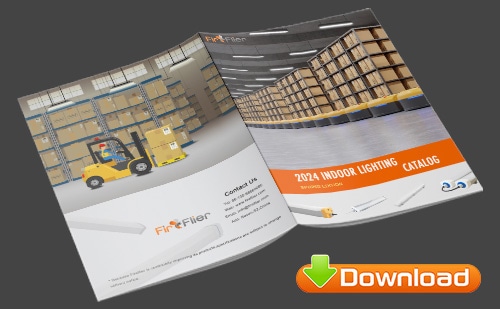As we step into the future, technology is guiding us toward greener and more efficient solutions in every sector. The lighting industry is no exception. In this exhaustive article, we explore one of the most controversial comparisons in lighting history: LED High Bay Lighting vs. Traditional Lights. This unbiased comparison aims to shed light on the major differences, advantages, and drawbacks of both light systems. Without further ado, let’s get enlightened!
Introduction to Lighting Systems
What is LED High Bay Lighting?
LED High Bay Lights are powerful, energy-efficient lighting solutions typically used in large, open spaces with high ceilings such as warehouses, factories, and gymnasiums. Their high lumen output provides intense brightness, ensuring adequate illumination in spaces with heights ranging from 20 feet to approximately 45 feet.
What are Traditional Lights?
When we talk about traditional lights, we’re generally referring to legacy lighting technologies such as incandescent, halogen, and fluorescent lamps. These have been the go-to options for many businesses for decades, providing reasonably adequate lighting at a comparably low initial cost.
LED High Bay Lighting vs. Traditional Lights: An Unbiased Comparison
Energy Efficiency: LEDs Lead the Way
In the face-off of LED High Bay Lighting vs. Traditional Lights, the first notable difference is energy efficiency. LED High Bay Lights consume significantly less energy to produce the same amount of light as traditional options. While traditional lighting may have a lower upfront cost, LEDs win in the long run by drastically cutting down energy bills.
Lifespan: The Longevity of LEDs
LED lights offer a staggering lifespan compared to traditional lights. They can last up to 50,000 hours – that’s about six years if they’re on 24/7! In comparison, traditional light bulbs last around 1,000 to 2,000 hours. So, if you’re tired of constantly replacing blown bulbs, LEDs are a much more appealing choice.
Advantages and Drawbacks: A Comprehensive Overview
Benefits of LED High Bay Lighting
There’s more to the story than just energy efficiency and longevity. LED High Bay Lights also provide better color rendering, uniform light distribution, and instant-on capability. They also don’t emit as much heat, meaning less strain on air conditioning systems.
Drawbacks of LED High Bay Lighting
Although LEDs have many perks, they’re not without their disadvantages. They typically come with a higher upfront cost and may require special disposal due to certain components. However, these drawbacks are often offset by their long lifespan and energy savings.
Pros of Traditional Lights
Traditional lights come with a lower upfront cost and are easy to install, making them an accessible choice for many. They’ve stood the test of time and are readily available in a variety of types and wattages.
Cons of Traditional Lights
However, traditional lights fall short in terms of energy efficiency, lifespan, and heat generation. They also often contain hazardous substances like mercury, which require special disposal methods.
Cost Considerations: Breaking Down the Numbers
A common deterrent for switching to LED High Bay Lighting is the initial investment. But when you break down the numbers, considering factors such as energy costs and replacement frequency, LEDs prove to be the more economical option in the long run.
Case Study: LEDs in Action
Real-life scenarios often present the best comparisons. Here, we look at a case study where a company switched from traditional lighting to LED High Bay Lights, resulting in significant energy savings and improved lighting quality.
Making the Switch: Your Transition Guide
Transitioning from traditional lighting to LED High Bay Lights can seem daunting. In this section, we provide a comprehensive guide to help you make the switch seamlessly and efficiently.
LED High Bay Lighting vs. Traditional Lights: FAQs
Why are LED High Bay Lights considered more energy-efficient?
LED High Bay Lights are more energy-efficient because they convert a higher percentage of energy into light, whereas traditional lights waste a lot of energy as heat.
What’s the ROI when switching to LED High Bay Lighting?
The ROI varies depending on the scale of the installation and local electricity rates. However, businesses often recoup their initial investment within two years thanks to energy savings and reduced maintenance costs.
Can I replace my traditional lights with LED High Bay Lights myself?
While it’s possible, it’s recommended to hire a professional electrician to ensure the installation is done safely and correctly.
Do LED High Bay Lights work with existing light fixtures?
In many cases, LED High Bay Lights can be installed in existing light fixtures. However, some situations might require new fixtures or adapters.
Are LED High Bay Lights suitable for outdoor use?
Yes, many LED High Bay Lights are designed to withstand outdoor conditions, but always check the product specifications to be sure.
Are there any environmental concerns associated with LED High Bay Lights?
While LEDs do contain some materials that need special disposal, they are generally more environmentally friendly than traditional lights, which often contain mercury.
In Conclusion
The debate between LED High Bay Lighting vs. Traditional Lights isn’t just about which lights up a room better. It involves careful consideration of energy efficiency, lifespan, cost, and environmental impact. And in most of these arenas, LED High Bay Lighting emerges as the clear winner.


